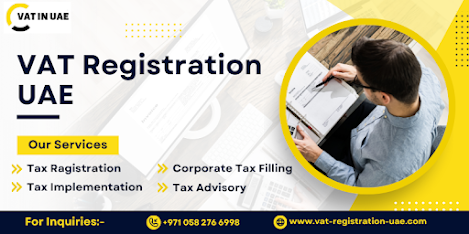How to Apply for VAT Registration in UAE
The introduction of Value Added Tax (VAT) in the United Arab Emirates (UAE) has brought about significant changes in the business landscape. VAT registration is mandatory for businesses meeting certain criteria, and it is essential to understand the process to comply with the regulations and avoid penalties. If you are a business owner in the UAE, here is a step-by-step guide on How to Apply for VAT Registration in UAE.
1. Determine Eligibility
The first step is to determine whether your business is required to register for VAT. Currently, businesses with an annual turnover exceeding AED 375,000 are obligated to register for VAT. However, businesses with a turnover between AED 187,500 and AED 375,000 have the option to register voluntarily. It is crucial to assess your business turnover to determine your eligibility for VAT registration.
2. Gather Required Documents
Before starting the application process, ensure you have all the necessary documents. The typical documents required for VAT Registration UAE include the trade license, passport copies of the business owner and authorized signatories, Emirates ID copies, financial statements, bank account details, and business premises lease agreement. It is essential to have these documents ready to streamline the registration process.
3. Create an e-Services Account
To begin the VAT registration process, you need to create an e-Services account on the Federal Tax Authority (FTA) website. This account will be used to submit the application, track its progress, and access other VAT-related services. Provide the necessary details, including your email address and contact information, to create the account.
4. Complete the VAT Registration Application
Once your e-Services account is set up, you can proceed to fill out the VAT registration application form. The form will require information about your business, including its legal structure, activities, turnover, and contact details. Ensure that all information provided is accurate and up-to-date.
You can check:-
5. Submit the Application
After completing the VAT registration application, review it thoroughly to ensure all details are correct. Once you are confident in the accuracy of the information provided, submit the application through your e-Services account. You will receive an acknowledgment receipt confirming the submission.
6. Await FTA Review
The FTA will review your VAT registration application and may request additional information or documentation if necessary. It is important to respond promptly and provide any requested information to avoid delays in the registration process. The FTA will notify you of the approval or rejection of your application within a specified timeframe.
7. Obtain the VAT Certificate
If your VAT Registration application is approved, you will receive a VAT certificate from the FTA. This certificate confirms your registration for VAT and includes important details such as your Tax Registration Number (TRN). The TRN is a unique identifier that should be quoted in all VAT-related transactions.
8. Comply with VAT Regulations
Once you receive your VAT certificate, it is essential to understand and comply with the VAT regulations in the UAE. This includes issuing VAT-compliant invoices, maintaining accurate records, charging the appropriate VAT rate on taxable supplies, and submitting periodic VAT returns as required by the FTA.
9. Seek Professional Assistance if Needed
VAT regulations can be complex, and it is advisable to seek professional assistance, such as from tax consultants or accountants, to ensure proper compliance. They can provide guidance on VAT-related matters, assist with maintaining records, and help navigate any changes or updates in the regulations.
In conclusion, VAT registration is a crucial step for businesses operating in the UAE. By following the steps outlined above and ensuring compliance with VAT regulations, you can smoothly register for VAT and fulfill your obligations as a VAT-registered business.



Comments
Post a Comment